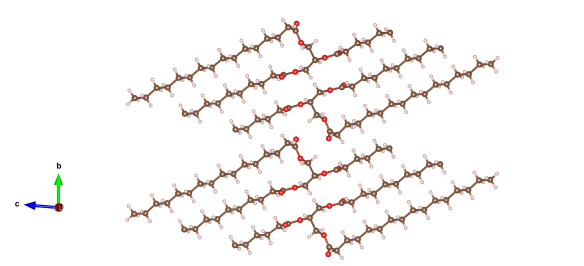Saturating your food – Palmitic acid
What does it look like?

Image generated by the VESTA (Visualisation for Electronic and STructural analysis) software http://jp-minerals.org/vesta/en/.
What is it?
As we move into the holiday season, here's a molecule that we'll probably be disgesting quite a bit of over the next month or so – palmitic acid. Palmitic acid is one of the fatty acids, and along with stearic acid is one of the simple linear molecules of this kind. It is, in fact, the most common of these essential molecules found in the animals, plants and microorganisms around us. Fatty acids are an important source of fuel for our bodies, especially affecting – it is thought – our heart and skeletal muscles.
Though you can get 'free' palmitic acid in nature, just the long chain of the molecule existing by itself, most palmitic acid is found in the form of triglycerides. We've met these molecules on the blog before, in the form of cocoa butter. Today we've featured the structure of pure tripalmitin, a triglyceride where each of the branches are made from a palmitic acid molecule.
Where did the structure come from?
The structure of tripalmitin was solved by van Langevelde et al. in 1999, and is #2003033 in the Crystallography Open Database.






